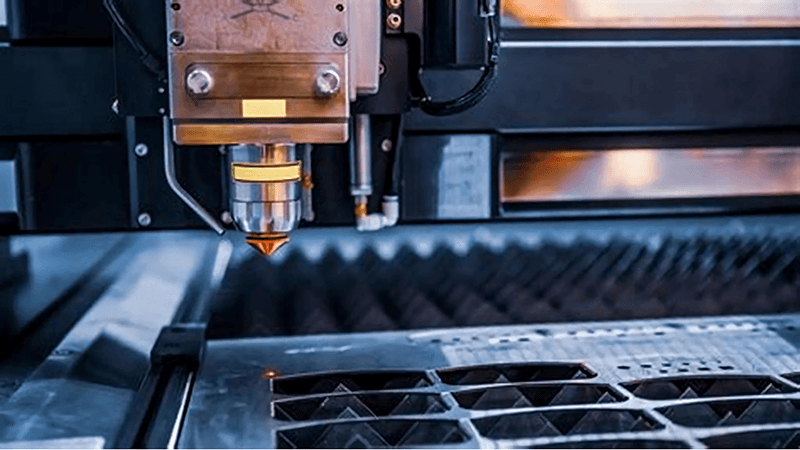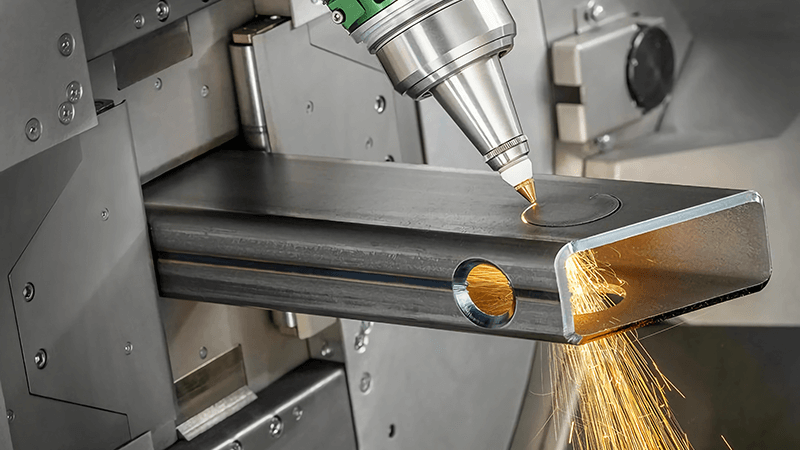Choosing the right laser power isn't just a technical decision—it can make or break your production line. Many buyers either overspend on excess wattage or choke their productivity by going too low.
To choose the right fiber laser power, you need to match it with your material thickness and production goals. Go too small, and your speed and cut quality suffer. Go too big, and you're burning money.
If you're trying to figure out what power is right for your laser cutter, you're not alone. I’ve helped hundreds of industrial buyers and distributors navigate this decision. Here's how I think through it, from my experience at Kirin Laser.

What power fiber laser do I need?
Many buyers start with this question—and it's the right one. But the answer depends entirely on what you cut, how thick it is, and how fast you need it done.
If you're cutting thin sheet metal (under 3mm), a 1kW fiber laser is usually enough. For thicker materials like 6mm or 10mm, I always recommend 2kW–4kW. Beyond 12mm, go 6kW or higher.
Match power to thickness and speed
One thing I always explain to clients is that laser power1 isn't just about capability—it's also about throughput. Here's a simple breakdown based on what we use at Kirin Laser:
| Material Type | Thickness Range | Recommended Power |
|---|---|---|
| Mild Steel | 0.5–3mm | 1–1.5kW |
| Mild Steel | 4–6mm | 2–3kW |
| Mild Steel | 8–12mm | 4–6kW |
| Stainless Steel | ≤3mm | 1–2kW |
| Stainless Steel | 4–6mm | 2–3kW |
| Stainless Steel | 8–12mm | 3–6kW |
| Aluminum / Brass | ≤4mm | 2–3kW |
| Aluminum / Brass | ≥6mm | 4kW and up |
Clients often want to “future-proof2” and jump to 6kW or 12kW right away. But if you’re mostly doing thin sheet jobs, a 1.5kW or 2kW machine will be more stable, cheaper to run, and easier to maintain.
I’ve seen it happen many times: oversizing a machine leads to more wasted power and higher operating costs.

How to calculate laser cutting power?
Some customers ask if there’s a formula. There’s no universal one—but I do follow a basic rule of thumb.
The thicker the material and the faster the required speed, the more laser power you need. Cutting power scales with the square of thickness if you want to maintain speed and quality.
It’s about energy, not just watts
Think of power as your cutting engine3. But just like cars, it's not all about horsepower. It's about how well you apply it. Here's how I usually estimate:
- For every extra 1mm of mild steel, add about 500–1000W
- If you want to double your speed, you’ll need significantly more power (not just double)
- Gas type also matters: Nitrogen cutting uses more energy than Oxygen
Let me give you a real example. One of our clients in Texas was cutting 12mm stainless with a 1.5kW machine. He complained about slow speed and messy edges. We upgraded him to a 3kW fiber laser. Not only did cut quality improve, but output speed more than doubled. His words? “Like trading a bicycle for a Tesla.”
That’s the power of matching wattage to application4.

How powerful of a laser cutter do I need?
This question usually comes from buyers who are unsure whether to go 1.5kW, 3kW, or even higher. Here’s what I always ask them first: what do you cut, and how fast do you want it done?
You need just enough power to cut your thickest material at your target speed, with clean edges and minimal dross. Anything more adds cost without value.
Avoid underpowered and overpowered machines
There are two mistakes I’ve seen too often:
- Buying too little power: You save on machine cost, but your production suffers. Cutting 10mm plates on 1.5kW will work—but slowly, with poor quality.
- Buying too much power: That 12kW machine sounds great—until you see the power bill5 and realize you're mostly cutting 2mm sheets.
Here's how I usually decide:
| Cutting Task | Suggested Power |
|---|---|
| Light sheet metal (≤2mm) | 1kW–1.5kW |
| General metal fab (3–6mm) | 2kW–3kW |
| Heavy industry (8–12mm) | 4kW–6kW |
| Specialized thick cutting | 6kW–12kW |
Remember, the fiber laser head6, cooling system, and beam delivery must also be optimized. A poorly configured 6kW won’t outperform a well-tuned 3kW.

What is the cutting capacity of 12kW fiber laser?
Some buyers go straight to high power. 12kW machines sound impressive—and they are. But are they necessary?
A 12kW fiber laser can cut carbon steel up to 40mm, stainless steel up to 30mm, and aluminum up to 25mm, depending on the optics, nozzle, and gas. But most users never need that much.
When is 12kW a good idea?
We’ve sold 12kW machines7 to heavy equipment factories and shipyards. These are cases where:
- Cutting thickness is 20mm and above
- Speed is a major bottleneck
- Production lines run 24/7
- Buyers want fewer passes and edge polishing
But for 80% of industrial users, 3kW–6kW is the sweet spot. Even large fabrication shops can do 95% of their jobs with a 4kW fiber laser8.
Another thing to note: 12kW machines need stronger cooling, more stable electricity, and tighter safety standards. If you're just scaling up, it may be smarter to buy two 4kW machines instead of one massive unit.
Here’s what I usually advise: Buy what you need now, and grow in power when your order volume demands it.

Conclusion
Choosing the right laser power9 is about balance. At Kirin Laser, we always start with your material, speed, and business goals. A 1kW machine might be perfect for thin sheets, while a 6kW beast makes sense for 12mm+ plates. But more isn't always better. You need precision, not just wattage. Talk to someone who cuts every day—we’ll help you find the power that actually works.
-
Understanding laser power is crucial for optimizing cutting speed and quality, ensuring efficient operations. ↩
-
Exploring future-proofing strategies can help you make informed decisions for long-term efficiency and cost savings. ↩
-
Exploring this will provide insights into optimizing your cutting processes and improving performance. ↩
-
Understanding this concept can greatly enhance your energy efficiency and application effectiveness. ↩
-
Understanding power bill factors can help you choose the right machine and avoid unnecessary costs. ↩
-
Exploring the role of the fiber laser head can enhance your knowledge of optimizing cutting efficiency. ↩
-
Explore this link to understand the advantages of 12kW machines, especially in high-demand environments like factories and shipyards. ↩
-
Discover why a 4kW fiber laser is often the best choice for large fabrication shops, balancing efficiency and cost. ↩
-
Find the best laser cutting machine and laser cutting solutions from Kirin Laser, clicking this link to get all your needs for your business. ↩





